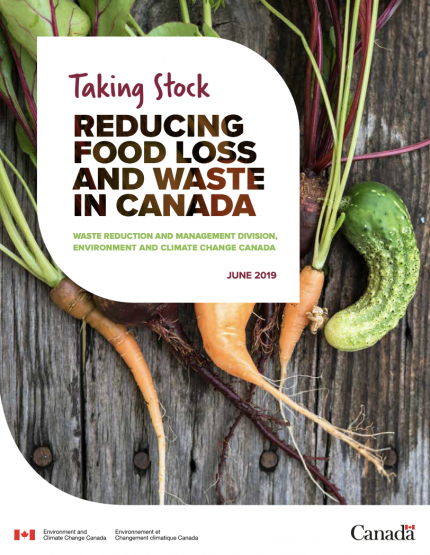Environment and Climate Change Canada releases reports on Reducing Food Loss and Waste
Posted: July 29, 2019
Categories: GoodFoodBites / Research
 Environment and Climate Change Canada (ECCC) has released a new report available online aimed at tackling food waste in Canada, Taking Stock: Reducing Food Loss and Waste.
Environment and Climate Change Canada (ECCC) has released a new report available online aimed at tackling food waste in Canada, Taking Stock: Reducing Food Loss and Waste.
The foreword of the report shares that recent research estimates that 20%, or 11 million tonnes, of all food produced in Canada annually becomes avoidable food loss or waste.
In 2015, Canada committed to the United Nation’s 2030 Agenda for Sustainable Development, which includes a target to “halve per capita global food waste at the retail and consumer levels and reduce food losses along production and supply chains, including post-harvest losses.”
Taking Stock‘s foreword explains, “Reducing food loss and waste can benefit Canadians by saving them money, improving the efficiency and competitiveness of the agri-food and agriculture sector, reducing greenhouse gas emissions, and will contribute to global efforts to address this issue.”
In addition to in-depth analysis, research & data, and proposed key action areas, the report also includes a number of educational resources to support food loss and waste reduction.
ECCC has also recently released another report, Reducing Food Loss and Waste In Canada – Workshop Summary, summarizing presentations, information and ideas shared during a workshop they hosted in February 2019, which brought together experts from industry, government and the non-profit sector to share ideas and discuss opportunities for measuring and reducing food loss and waste across the food supply chain.
Learn more on the Environment and Climate Change Canada website here.
• Bilan des activités: réduire la perte et le gaspillage alimentaire au Canada
• Réduire la perte et le gaspillage alimentaire au Canada – Résumé de l’atelier
